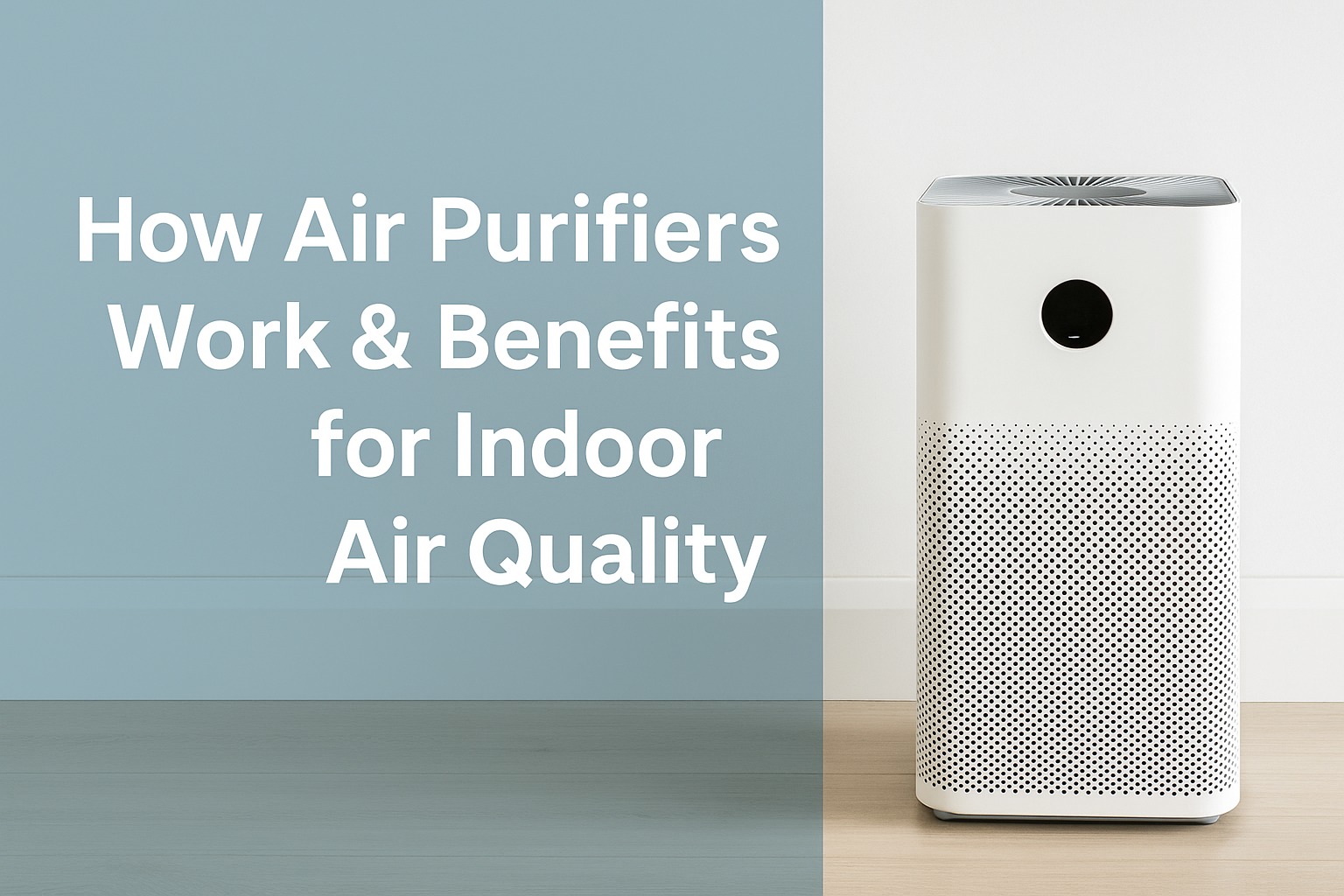Why Indoor Air Quality Should Be on Your Radar

Most of us spend up to 90% of our time indoors—whether it’s at home, in the office, or commuting. And here’s the kicker: indoor air can be two to five times more polluted than the air outside.
Common indoor air pollutants include:
- Dust and dust mites
- Pet dander
- Pollen
- Mold spores
- Smoke
- Chemical fumes from cleaning products and paint
- Volatile Organic Compounds (VOCs)
Breathing in these contaminants daily can lead to allergies, asthma, fatigue, or even long-term respiratory issues. This is where air purifiers come in handy.
What Does an Air Purifier Actually Do?
At its core, an air purifier removes airborne particles from indoor spaces using a series of filters or purification technologies. Some models are simple with a single filter, while others use multiple layers, UV light, or even ionizers to capture or neutralize pollutants.
Key Functions of an Air Purifier:
- Traps airborne allergens like pollen and pet dander
- Removes dust and smoke particles
- Neutralizes odors from cooking, pets, or chemicals
- Kills bacteria and viruses (in some models using UV or HEPA filters)
- Reduces VOCs from household items like paint and cleaning sprays
Main Types of Air Purifiers
Not all air purifiers are built the same. Here are the most common types you’ll come across:
1. HEPA Filters (High-Efficiency Particulate Air)
- Removes 99.97% of particles as small as 0.3 microns
- Ideal for allergy sufferers and pet owners
2. Activated Carbon Filters
- Great at removing odors and gas pollutants
- Works well for homes with smokers or strong chemical odors
3. UV-C Light Purifiers
- Targets bacteria, viruses, and mold spores
- Often paired with HEPA for better protection
4. Ionizers
- Releases negative ions to attach to pollutants and drop them from the air
- Some may produce ozone, so always check if it’s ozone-safe
Benefits of Using an Air Purifier at Home
When you add an air purifier to your living space, you’re not just buying a gadget—you’re investing in better health and comfort.
Top Benefits:
- Relief from allergies and asthma: Clear air means fewer triggers
- Better sleep: Clean air improves sleep quality
- Elimination of bad odors: No more lingering smells from cooking or pets
- Cleaner home environment: Less dust buildup on furniture
- Protection from airborne viruses and bacteria: Essential during flu season or health outbreaks
Common Challenges You Might Face
While air purifiers are incredibly helpful, they’re not magic boxes. Knowing the potential downsides can help you make smarter decisions.
Things to Watch Out For:
- Noise levels: Some models can be noisy on higher settings
- Maintenance needs: Filters need regular cleaning or replacing
- Coverage area: One small purifier won’t clean an entire house
- Energy usage: Running all day can increase electricity bills
- Price tag: High-quality models can be an investment upfront
Trends in Air Purifier Technology (2025 and Beyond)
As concerns around indoor air quality grow, manufacturers are stepping up their game.
Here’s What’s Trending:
- Smart Air Purifiers: Connected via Wi-Fi or apps to control remotely
- Air Quality Sensors: Real-time tracking and auto-adjusting settings
- Eco-Friendly Models: Energy-efficient with washable filters
- Multi-Function Devices: Some models double as humidifiers, dehumidifiers, or fans
- Compact Designs: Sleek, minimal, and easy to blend with your décor
A Natural Alternative Worth Considering
If you’re looking for a chemical-free way to combat dust and odors, Smell Away® Odour Neutraliser and Dust Remover is a great companion to traditional air purifiers. It targets dust and odors in a non-toxic way, making it safe for homes with kids, pets, or allergy sufferers.
Whether used alongside a purifier or on its own, the Smell Away® Odour Neutraliser and Dust Remover enhances indoor air freshness naturally.
Tips for Choosing the Right Air Purifier
When shopping for an air purifier, you don’t want to just grab the first one on the shelf. Here’s what to keep in mind:
- Room size: Match the purifier to the square footage of your space
- Filter type: HEPA for particles, carbon for smells, UV for germs
- Noise level: Especially important for bedrooms or home offices
- CADR rating: The higher the Clean Air Delivery Rate, the faster it works
- Budget: Don’t forget to factor in the cost of replacement filters
Maintenance: Keeping Your Air Purifier at Peak Performance
A good air purifier can last for years—but only if you take care of it.
Simple Maintenance Checklist:
- Clean or replace filters regularly (every 3–6 months, depending on the model)
- Wipe down the exterior to keep dust from clogging vents
- Use in well-ventilated areas for better airflow
- Keep windows and doors closed while it’s running for max efficiency
Who Needs an Air Purifier the Most?
While everyone can benefit from cleaner air, some groups may find air purifiers especially useful:
- People with allergies or asthma
- Pet owners
- Smokers or those living with smokers
- Urban dwellers near traffic or industrial zones
- Parents of newborns or young children
Final Thoughts
Clean air isn’t a luxury—it’s a foundation for better health, sharper focus, and restful sleep. Whether you’re tackling allergies, removing odors, or just wanting to breathe easier, investing in a reliable air purifier is a smart and worthwhile decision.



